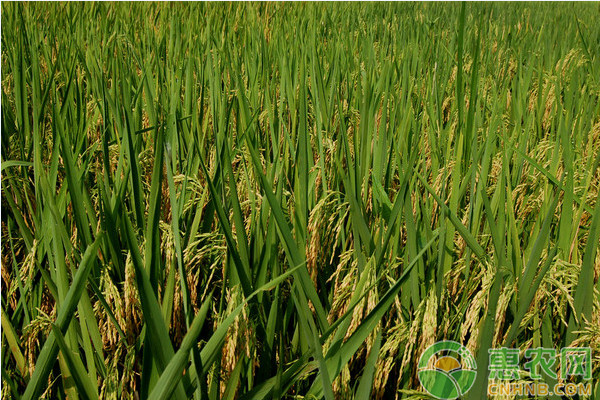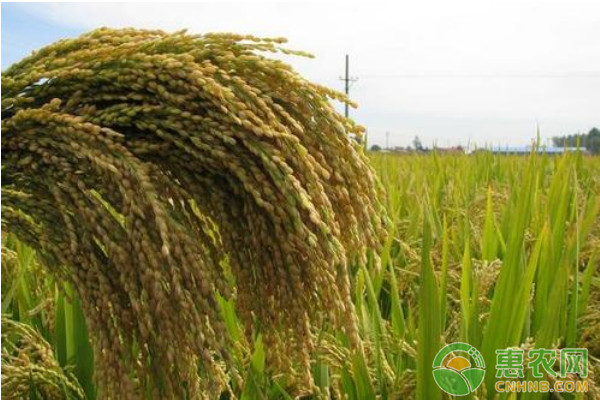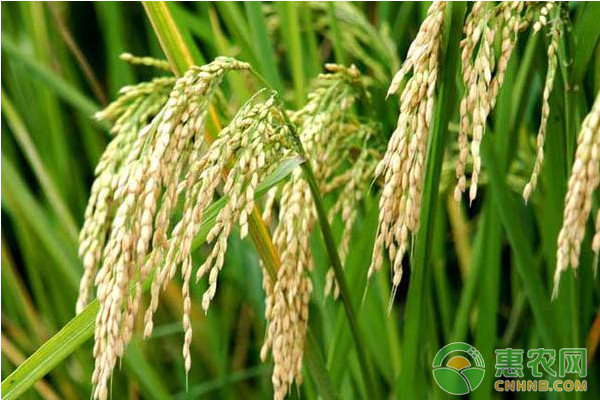Rice needs to absorb different elements during the growth and development process, and rice deficiency during rice growth will have a great impact on rice. Let's take a look at the symptoms and remedial measures of rice deficiency with Xiaobian.

1 nitrogen deficiency
When rice is deficient in nitrogen, it grows slowly, the plants are short, and the leaves are yellow. Symptoms begin to yellow from the lower old leaves and gradually extend to the upper leaves. One leaf starts from the tip of the leaf and then expands upwards. The posterior midrib extends to the whole leaf; the root is slow, and the fine root and root hair develop poorly. More; early maturity of the plant, low rate of ear formation, less effective panicles, shorter ears, less kernels and lower yield. The reason is that the amount of base fertilizer applied is insufficient. The prevention and control measures are timely application of quick-acting nitrogen fertilizer, applying appropriate amount of phosphorus and potassium fertilizer, and cultivating the field after application, so that the fertilizer is integrated into the soil. The main remedy is to spray 2% urea, 350 grams per mu.
2 Phosphorus deficiency
Phosphorus is a component of many important organic compounds in rice. It plays an important role in rice growth and development, early maturity, high quality and high yield in the early stage of crop growth. When rice is deficient in phosphorus, it is generally characterized by a stiff seedling, and the growth of the plant is markedly slow. The rice is clustered, with no or little tillering. The rice seedlings are thin, the leaves are erect, and the leaves are dark green or grayish green with purple. In severe cases, the leaves are curled in a ring along the midrib and the leaves are atrophied. Phosphorus-deficient plants are characterized by short and thin, mostly yellow roots, basically no white roots, no black roots, soft and less elastic roots, less lateral roots, and tightly clamped, and the roots become black and rot. Phosphorus deficiency also delays heading, flowering and maturation, and it is difficult to heading, inconsistent in maturity, and the number of grains per panicle is not full; there is no increase in yield when rice is over-phosphorus, which often causes zinc deficiency to reduce production. Phosphorus deficiency is prone to occur in Xinyi sandy beach land and soil organic matter-deficient plots, cold-soaked fields, and inadequate application of base fertilizers, as well as in production and cold springs. The control measures are shallow water topdressing, 30 kg of calcium phosphate per acre mixed with ammonium bicarbonate 25~30 kg with the application, after the application of cultivating the field; shallow irrigation, repeated exposure, to increase the ground temperature, enhance the rice roots The ability of phosphorus to absorb and metabolize. After the new root is issued, the acre is 3 to 4 kilograms of urea, which promotes the restoration of growth.
The main remedy is to spray 2% diphosphoric acid, 3000 grams per mu.

3 potassium deficiency
Potassium can promote photosynthesis, enhance drought resistance of crops, improve cold resistance, and enhance disease resistance and lodging resistance. When rice is deficient in potassium, there are brown spots on the leaves of the disease, which is often called brown blight. Generally, it starts to grow slowly, the plants are short, and there are few tillers. The old leaves are yellowish, and there are dusty brown spots on the tip of the leaves. They develop into brown spots, irregular shapes, and distinct edge boundaries. They are often distributed in strips or blocks between the veins. In severe cases, the brown spots are connected into pieces. The leaves are red and dead. The new roots of the diseased plants are few and short, the old roots are thin and inelastic, brownish gray to black, and even stinky and rot, the diseased plants are easy to pull up. In severe cases, difficulty in heading, dry seeds, shrinkage, short internodes, easy to fall. The control measures are drainage when remedial, 150 kg of plant wood ash, and 7.5 kg of potassium chloride after cultivating the field or mu, and applying appropriate amount of nitrogen fertilizer, and interstitial irrigation to promote root growth and increase the absorption capacity. Potassium fertilizer can be applied separately during the young differentiation period. During the heading and flowering period, the micro-fertilizer such as potassium dihydrogen phosphate can be sprayed on the foliage.
The main remedy is to spray 2% potassium phosphate at a dose of 300 grams per acre.
4 trace elements
4.1 zinc deficiency
After the rice returned to green, it began to develop, and reached a peak 20 days after transplanting. It shows that the seedlings are not long, and the tips of the leaves at the base of the plants are dry. Then, in the middle part of the leaves, yellow red or even auburn irregular lesions appear, and the midrib of the new leaves, especially the base, is chlorotic. The diseased plants have slow leaves, less tillers, weak hair roots, short stature, late maturity, and stiff seedlings. The control measures are 2-3 days before transplanting in the field, and foliar spraying is carried out with 30 kg of 1.5% zinc sulphate solution per acre. At the beginning of the heading and at the heading stage, 100 g of zinc sulfate per 50 mu of water is sprayed on 50 kg of water. Shi.
4.2 Iron deficiency
It usually occurs in the seedling stage, the whole leaves are chlorotic, then white, and the veins are green. The plants grow normally and there is no dwarf or deformity.
4.3 Manganese deficiency
The first is the chlorosis between the bottom veins and the light brown needle-like spots, which further develop into strips, which then become brown and necrotic. The plants are short, the tillers are normal, and the new leaves are small, narrow and pale green.
4.4 Boron deficiency
The first is the chlorosis between the bottom veins, and there are light brown needle-like spots, which further develop into strips, and then become brown and necrotic. The rice plants are short, but the tillers are normal, and the new leaves become small, narrow and pale green.

4.5 lack of copper
The leaves are blue-green, with chlorosis and curling at the tip of the leaf near the tip, and the tip stops growing when it is severe. The chlorosis develops down the sides of the veins, and the tip of the leaves becomes dark brown necrosis. The grown leaves are folded and curved, nearly white, but the tiller is more normal, the new tillers can continue to grow, the rice is poorly sturdy, the empty mites are more, and the yield is reduced.
4.6 calcium deficiency
If the calcium is slightly deficient, it usually has little effect on the appearance of the plant. When the calcium deficiency is serious, the tip of the upper fresh leaf turns white, curls and shrinks, and when the calcium deficiency is particularly serious, the plant is dwarfed and the growth point is necrotic.
4.7 Silicon deficiency
Rice is a crop that requires more silicon. The role of silicon is mainly in: enhancing the disease resistance of rice. Silicon forms a silica gel layer on the leaves, sheaths, stems, roots and epidermis of rice to prevent disease invasion. Improve drought resistance. The application of silicon fertilizer in rice increased the 1000-grain weight and the plants increased. When rice is deficient in silicon, the stem is weak, easy to fall and infected by disease. In the early stage of rice growth, the number of effective panicles decreased, and the number of silicon-deficient spikelets decreased.
The above is all about rice deficiency. After rice deficiency, its symptoms are often expressed from the leaves. Therefore, in the early rice growth process, the color and shape of the leaves and plants should be observed frequently, the type of deficiency should be distinguished, and the remedy should be immediately remedy. .
Forehead Thermometer;infrared thermometer:digital thermometer:clinical thermometer
Shenzhen Urion Technology Co., Ltd. , https://www.urionhealth.com